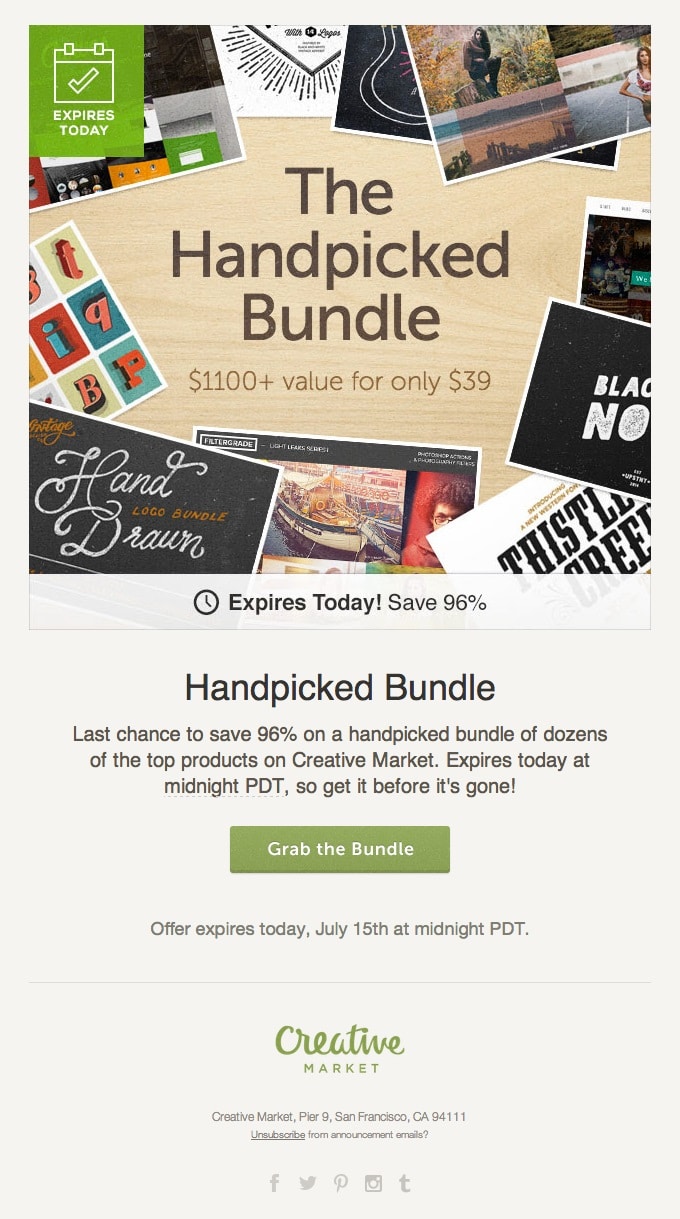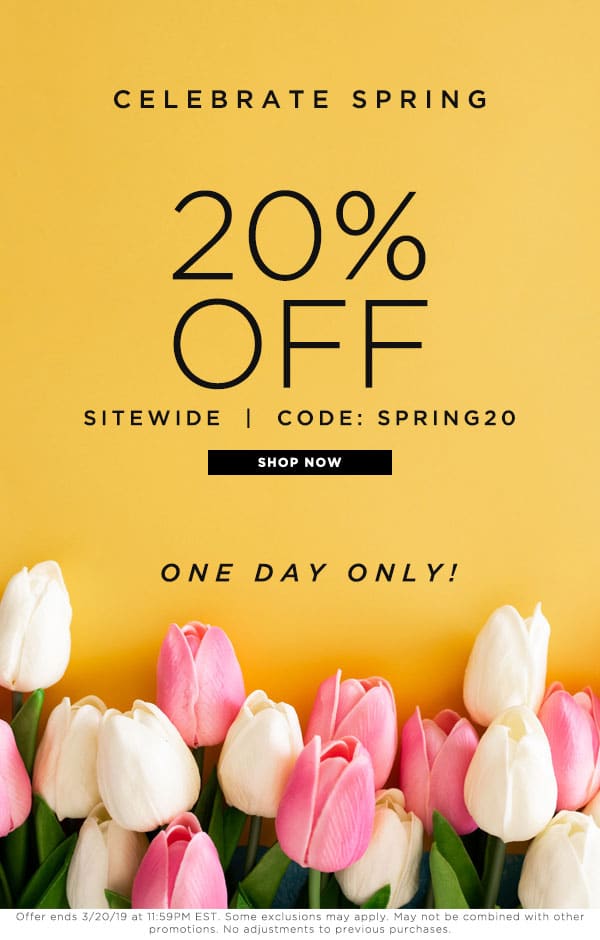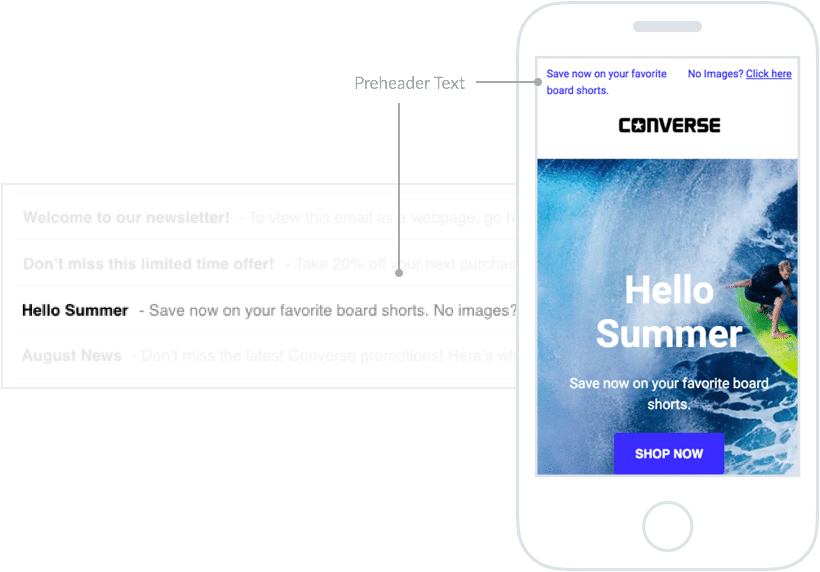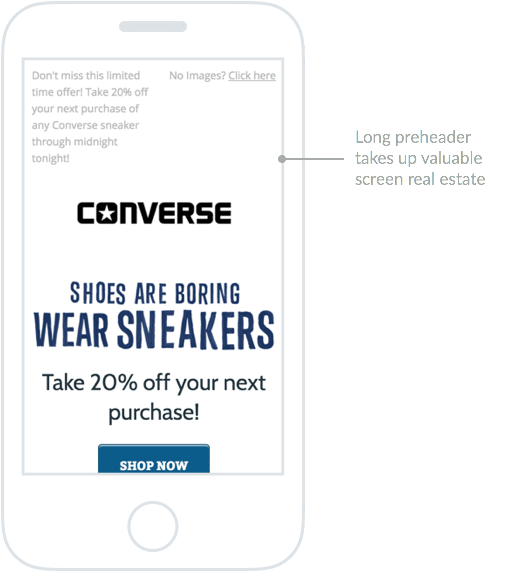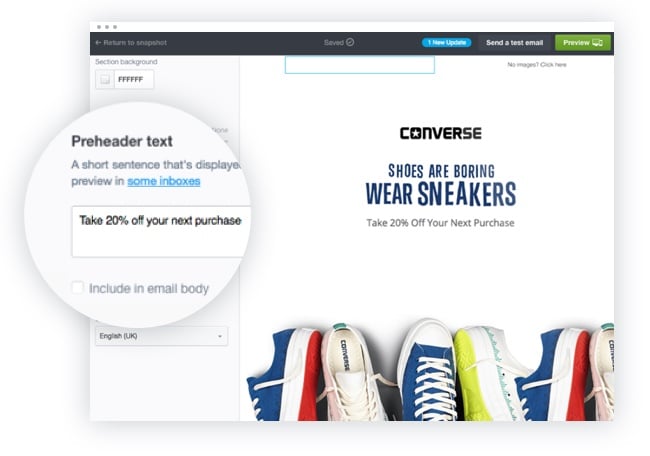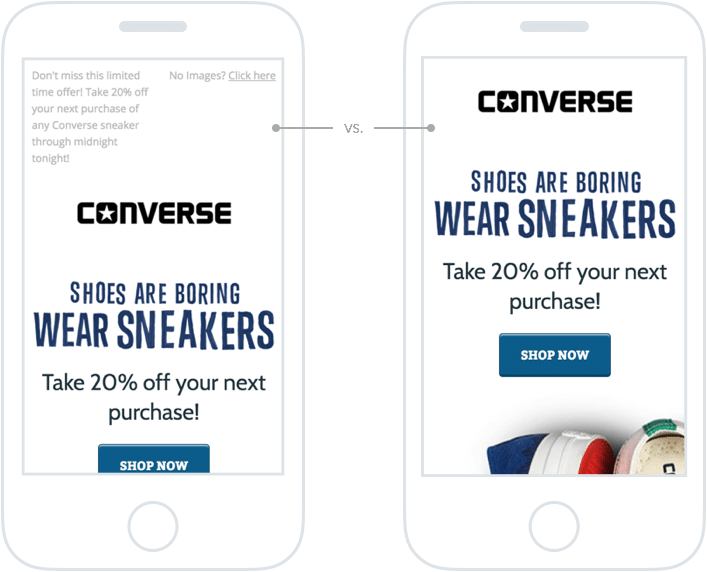Article first published in August 2015, updated April 2019
Do you use preheader text in your email marketing campaigns?
In the last five years, email opens on mobile devices have grown over 30%. There are now more emails opened on mobile devices than on desktops.
This shift to mobile has made the use of preheader text an important consideration for any marketer using email to grow sales and revenue.
Read on to discover what preheader text is, why you should use it, and how to write effective preheader text to help your email marketing campaigns get opened and acted upon.
A preheader is the summary text that follows the subject line when an email is viewed in the inbox. Many mobile, desktop, and web email clients provide them to tip you off on what the email contains before you open it. Users are using this feature to screen their emails, while marketers are using it as an opportunity to make an impression. Here’s an example in Gmail:
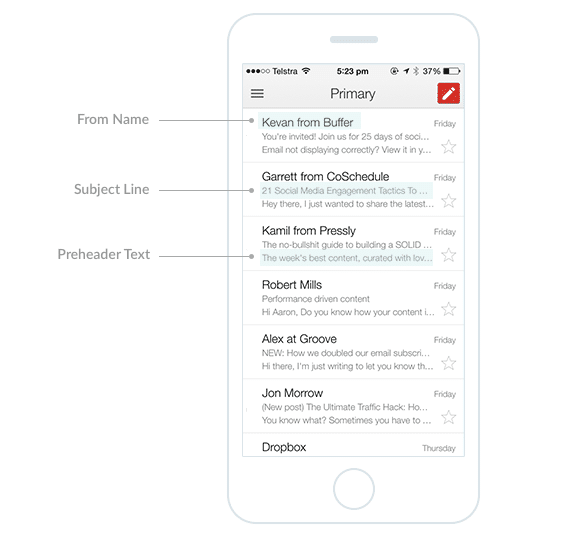
Everything you need to know about preheaders
Preheader text is verbiage that summarizes the information you’re providing in your email, newsletter, or related message. It offers audiences a quick blurb regarding what they can expect, should they decide to read the included content.
Email preheaders can be great tools if you track your open rate. If you’re using analytics, you can monitor how many people open the emails and messages you send, so, if you send 1,000 emails and only 300 bounce back, then 700 clients likely received the information. From there, you can monitor how many of those 700 individuals opened the emails and read what was provided.
Granted your open rate is high, your preheader is likely set to go and doesn’t need additional work. People saw what the email was about and were intrigued enough to continue. However, if your rate is low, it might be worth your time to reexamine your preheader and decide what to fix.
Consider the following email preheader best practices. The first thing you’ll want to do when creating a good preheader is read your content several times and, when you think you can’t read anymore, read it again. Examine the nooks and crannies of your message. What are you trying to say or accomplish? What’s so intriguing about this text that you think people should read it? Examining and understanding these ideas will help you put together a preheader that best summarizes the information and directs readers to the main points quickly.
How many characters are in a preheader?
Next, you’ll want to monitor your preheader’s length. On average, a solid preheader is between 85 and 100 characters. If it is too long, people may lose interest and close the email quickly. According to Time Magazine, the average adult has an attention span of about eight seconds. That’s one second less than your pet goldfish, so it’s important to keep your preheader short and sweet to ensure the person reading doesn’t just skim through.
Lastly, be creative with your preheader. Don’t just write it in black and white and post it at the top of the page like a standard email addition. Use a different font or catchy color and, if you can, make the words larger than usual. Your preheader will likely be the first thing readers notice, so making it big and bold enough for them to see could entice them early.
The following is a complete guide to preheaders with examples and thorough explanations on the basics of preheader text.
Use these examples to see how to get a reader’s attention.
Creative Market
Notice the first words of this company’s message. They’re about a special offer, an offer that’s ending today. People are always interested in discounts, so, if the reader is lacking anything that the company offers, they’ll know to act quickly, resulting in a quick and easy sale.
Source: Really Good Emails
Simply Soles
Another store that’s advertising a sale, but this one’s a little more boisterous. In large lettering, one clearly sees a message detailing 20% off the company’s shoes. Footwear doesn’t always come cheap, so a message like this is probably going to attract readers at first glance, if their own shoes need replacing. In this example, the offer and simplicity make the early text that will appear as the preheader so valuable.
Source: Milled
Why is optimizing your preheader text important?
There are a few reasons preheader text is an important consideration when creating your email campaigns:
Subscribers use preheader text as a prescreening tool
Along with the subject line, the preheader text is the first thing subscribers encounter when they receive your email campaign.
They use these two elements to decide whether to open your campaign and, without getting your email opened, it’s impossible to get people to click-through and take your desired conversion action (like making a purchase on your website, for instance).
Preheader text can be used as subliminal advertising
Some email marketers, like Dela Quist of the UK email agency Alchemy Worx, have claimed subject lines matter whether someone opens your email or not. They believe subject lines serve as a one-line advertisement in the inbox, and that the advertisement in and of itself has value.
The email agency Adestra echoed this sentiment recently in their 2015 Email Subject Line Analysis Report: “Whether or not your email gets opened, people see your subject line. What this means is that a subject line builds your brand in your customer’s inbox. Whether or not it gets opened, it creates a psychological association between your subject line and your brand. Over time, it creates a cognitive association between the language you use, and the perception your customers have about you.” If that is true of subject lines, it may be true of preheader text too. If a subscriber can read your subject line, they can at least read the beginning of your preheader text.
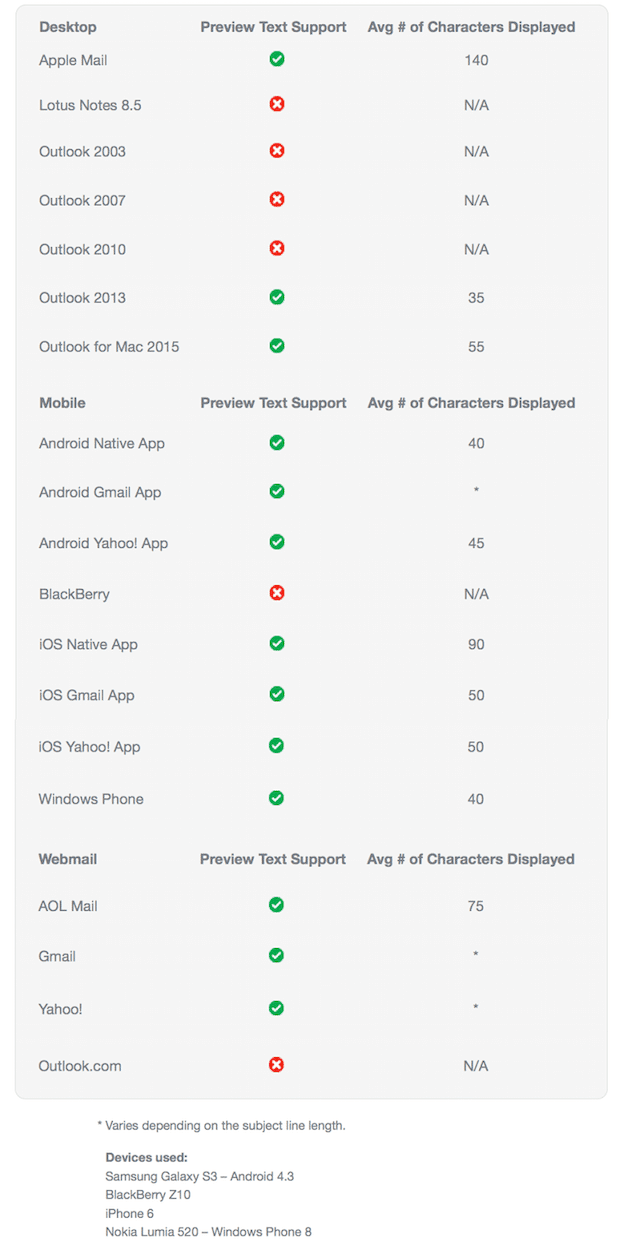
Keeping your preheader text to between 40-50 characters should give you a good amount of room to say something meaningful and compelling, while still ensuring it gets shown in full on most devices.
Consider how your preheader text will look in your email campaign
Typically, preheader text doesn’t just appear in the inbox next to the email subject line. It appears at the top of your email campaign as well.
This is an advantage because email clients draw this text from the first few words of your email campaign.
So, when creating your email marketing campaign, you also need to consider how your preheader text will look in your the body of your campaign when combined with all the other elements of your email.
Given that the preheader’s main role is to facilitate getting your email opened, it doesn’t need to be as prominent in the design of your email campaign. Long preheader text can significantly detract from the core content of your email when viewed on mobile because it can take up anywhere from 5-20% of the screen real estate.
Many of our customers are choosing to hide the preheader text in the body of their emails to keep their offers above the fold.
This simple trick can make a big impact on both the readability and design of your email:
Use it as an extension of your subject line
Given that the preheader text appears next to the email subject line, the two need to work together to tell a cohesive story rather than be thought of as two separate parts of your email campaign.
So, when writing your preheader text, think about how it can be used as an extension of your subject line to appeal to people and get them to open the email.
Derek Halpern does a great job of this in the announcement campaign for his latest webinar.
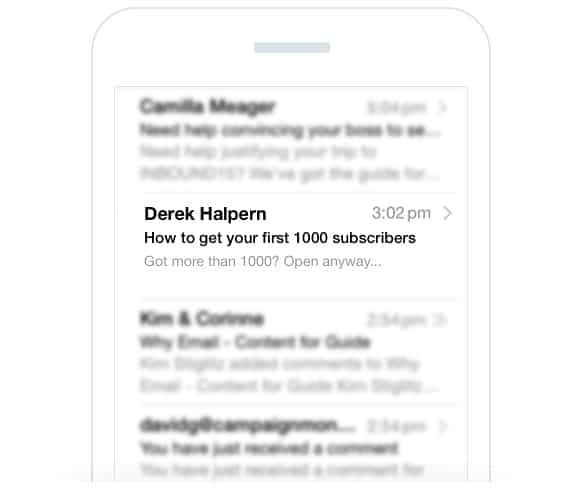
The email’s subject line is targeted toward a very specific audience (people who don’t yet have 1,000 subscribers) and, while it makes the email appealing to those people, it does limit its appeal to others.
So he counters this by using the preheader text “Got more than 1000? Open anyway…” to address the other recipients who have more than 1000 subscribers already.
By using the subject line and preheader text together, Halpern makes the email appealing to a wider number of recipients and increases the chance they’ll open the email and click-through.
Include a call to action in your preheader text
A simple but effective way to increase your open rates using the preheader is to simply tell people to open the email.
Master copywriter Joanna Wiebe does a good job of this in her campaign announcing a new blog post she wrote.
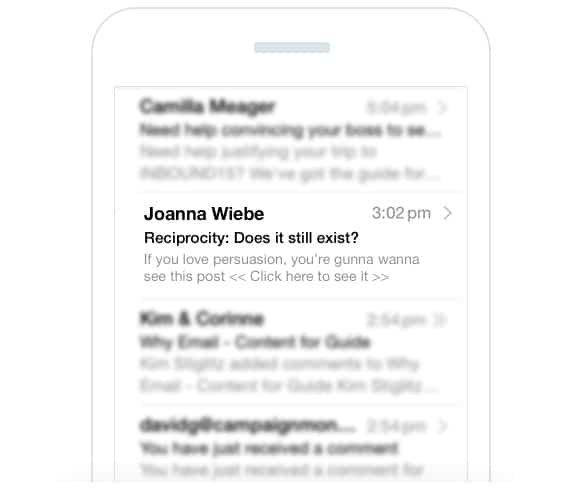
By telling people to “Click here” to see the post, she makes it clear to people what the next step they should take is and increases the chances of them doing so.
The addition of the extra arrows around the call to action also helps draw people’s attention to it and increases its effectiveness in getting the email opened.
Try including a call to action in your next preheader to make it clear to people they should open your email and increase the chances that they’ll do it.
How to add preheader content to your email campaigns
The preheader is a common element of email marketing campaigns and, as a result, most email marketing tools will enable you to add it to your campaigns.
If you’re a Campaign Monitor customer and using our drag-and-drop email builder,
click the cog at the top of the sidebar, scroll to the bottom of the pane, and start editing. Once you’ve got the preheader text dialed in, check the box if you want to hide the text in the email body and hit preview to make sure everything looks exactly as you want it.
Wrap up
Using preheader text in your email marketing campaigns can provide your subscribers more context as to what your email is about and encourage more of them to open and act on your campaigns. A preheader can have a significant impact on any email marketing campaign.
Don’t forget to utilize these 2 critical aspects of preheader text:
- Use the preheader as an extension of your subject line
- Always include a call to action
Use the best practices and information in this post to optimize the preheader in your next email campaign and enjoy the improved results it will bring.
From these steps, you can obtain better open rates and higher engagement. Learn about re-engagement here.

